
Beebalm, Monarda didyma, is a popular garden perennial. It's in the fragrant Mint Family
and the leaves may be brewed for tea. Deer ate mine this year, or at least all the flowers.
.
If you have any comments, observations, or questions about what you read here, remember you can always Contact Me
All content included on this site such as text, graphics and images is protected by U.S and international copyright law.
The compilation of all content on this site is the exclusive property of the site copyright holder.
Flowers Around Town in July
Since the seriousness of covid-19 became apparent early in March people have pretty much been isolating at home, other than expeditions shopping for groceries and similar necessities. Occasionally I drive or Himself drives me in a loop around town to photograph what's in flower. I take some images from inside the car, others from just outside the car. Fewer vehicles on the road, occasionally an infrequent person walking or bicycling. Let me share what I have seen.
There are links to other months and their flowers at the bottom of this entry.
Friday, 17 July 2020

Beebalm, Monarda didyma, is a popular garden perennial. It's in the fragrant Mint Family
and the leaves may be brewed for tea. Deer ate mine this year, or at least all the flowers.
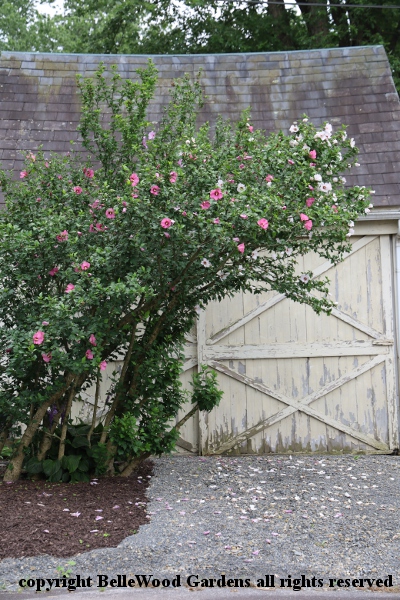
I pulled in to the parking lot at the Frenchtown Market IGA and
noticed this rose of sharon, Hibiscus syriacus. It's easy to grow in
sun to light shade, most soil types, and seedlings often volunteer.

A closeup of the rose of sharon, Hibiscus syriacus flowers.
Also comes in white, and flowers that lack the deeper "eye."
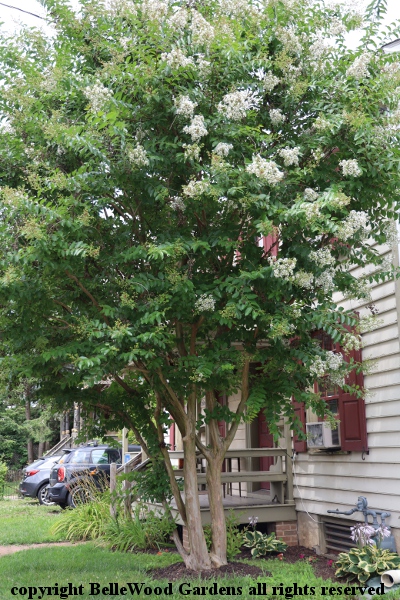
Crape myrtle, Lagerstoemia, are common trees in southern gardens.
From its size this one has clearly been here for some time. L. indica
is less hardy than white flowered Japanese crape myrtle, L. fauriei.
Maybe this specimen is one of the available hybrids of the two species.
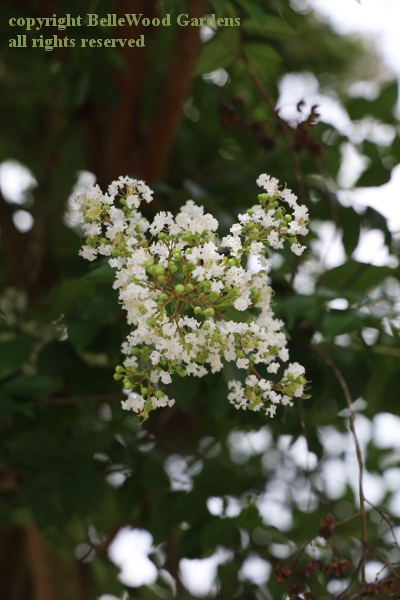
A closeup of one of the flower clusters of the crape myrtle.
Thursday, 16 July 2020
Driving on Creek Road in Alexandria Township I saw some native perennials in flower.
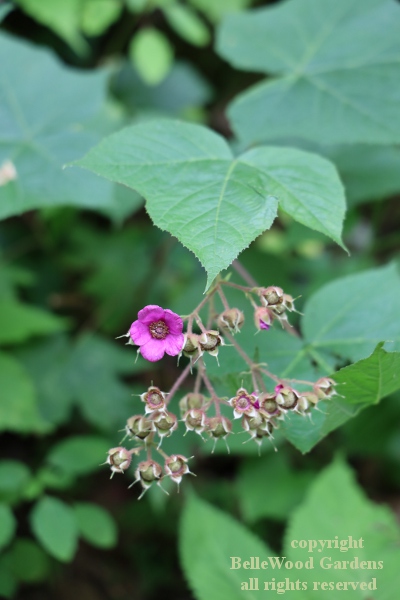
Purple-flowering raspberry, Rubus odoratus, is a showy member
of the bramble family. Vivid flowers, large maple-like leaves, and
lack of prickles on the 3- to 5-foot canes make it a good - if wide
spreading - plant for gardens. Birds eat the dry fruits, people not.

This one had me stumped but iNaturalist came up with the name. It may look
like a shrub but is herbaceous American spikenard, Aralia racemosa, with bold,
coarse foliage on black stems. Interesting for a shady moist garden. Racemes
of small greenish white flowers are followed by basically inedible black berries
that birds very much like. Below is a more detailed look at the flower raceme.
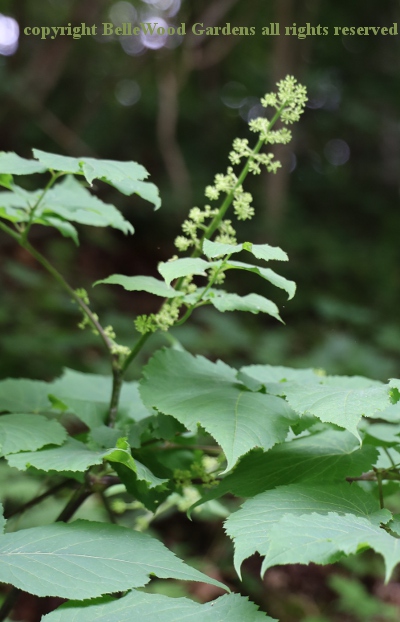
Tuesday, 14 July 2020
I went to buy peaches at a local orchard, and found a flower around town to photograph.
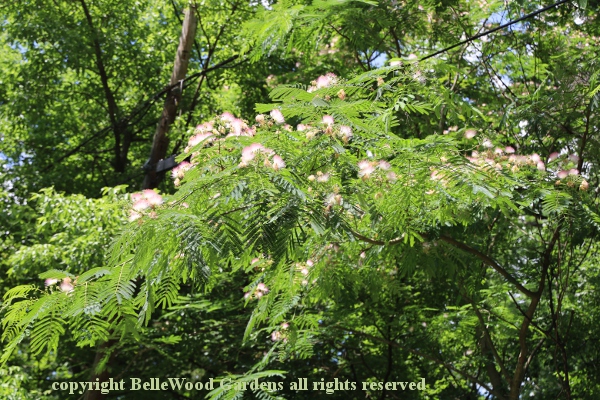
Mimosa or silk tree, Albizia julibrissin, is a fast-growing, weak wooded, deciduous tree. Native
from Iran to Japan, it has been widely planted in the United States and elsewhere, and has
escaped cultivation to naturalize in many areas, especially in the Southeast and even here
in New Jersey. The small leaflets close when touched and at night. Flowers look quite exotic.
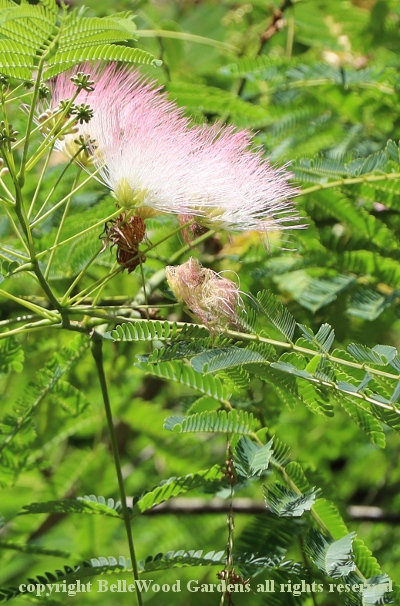
Back to Top
Back to July
Go to Flowers Around Town in March
Go to Flowers Around Town in April
Go to Flowers Around Town in May
Go to Flowers Around Town in June
Back to the main Diary Page